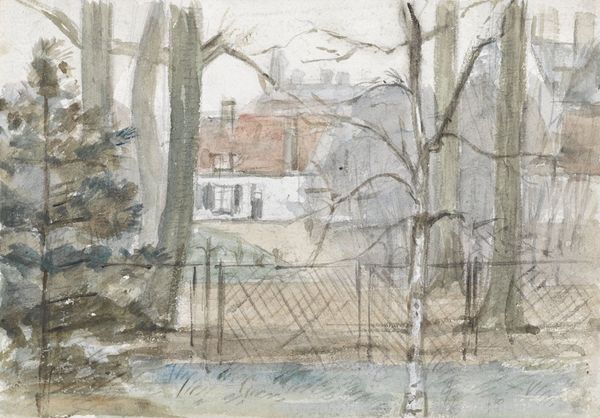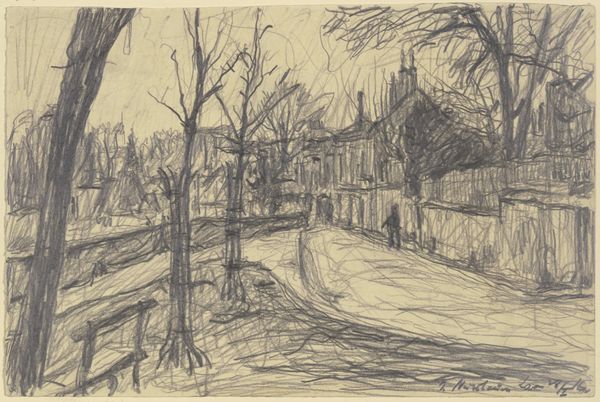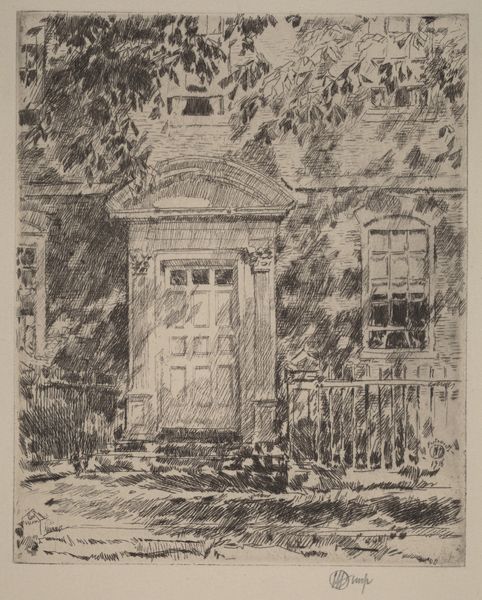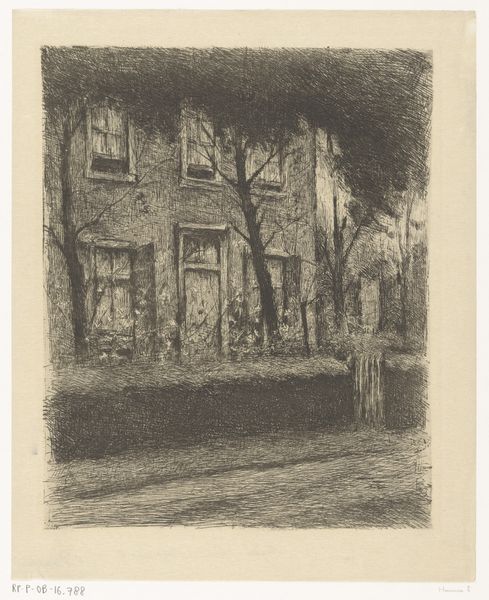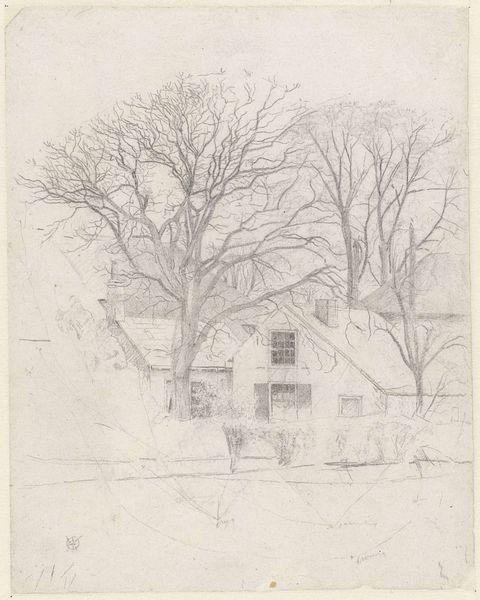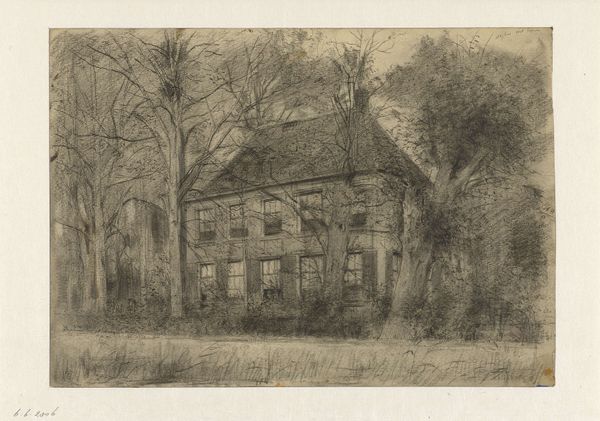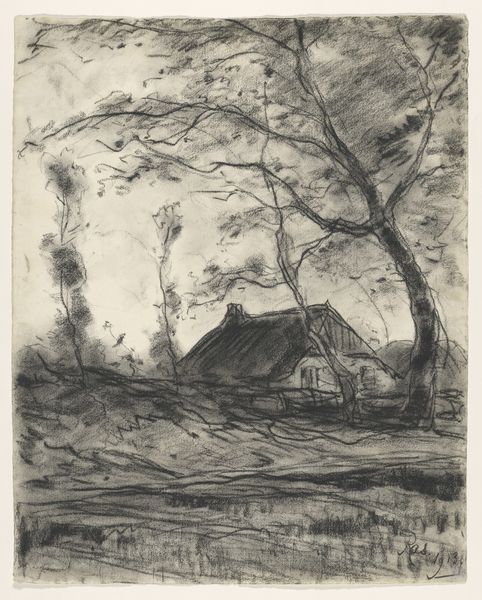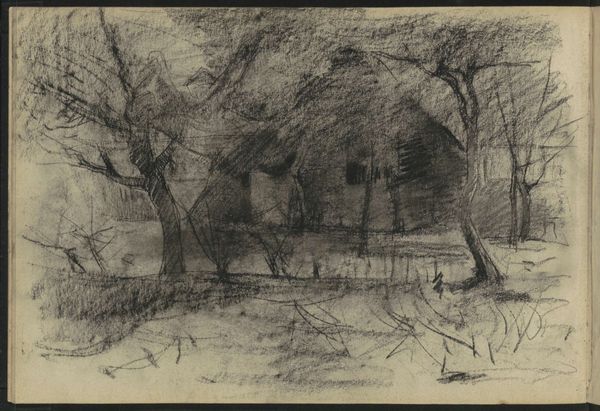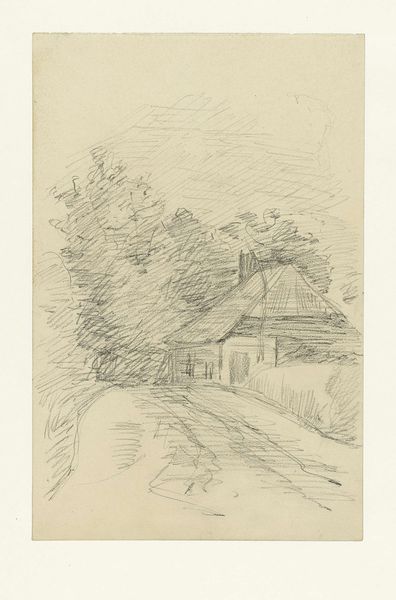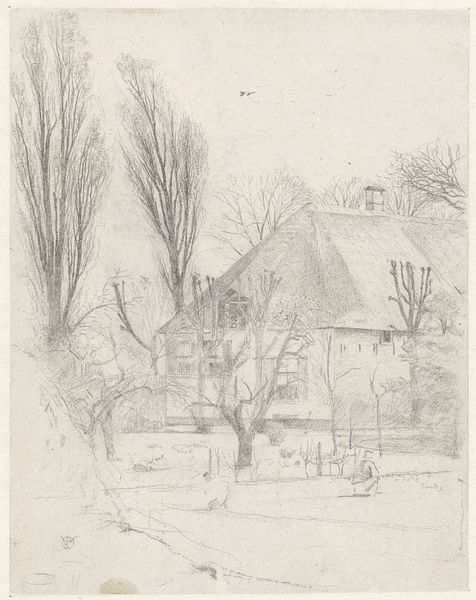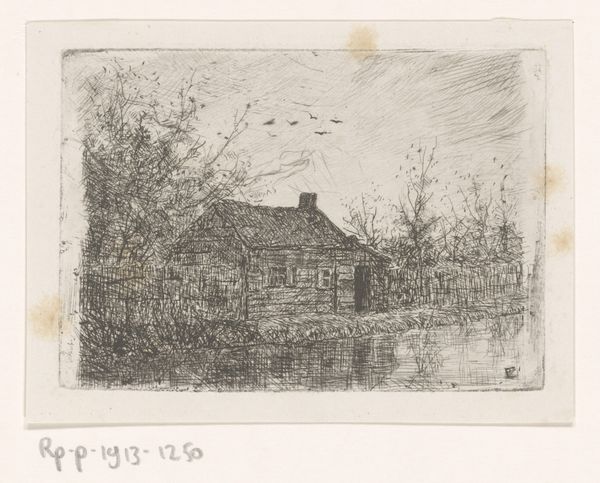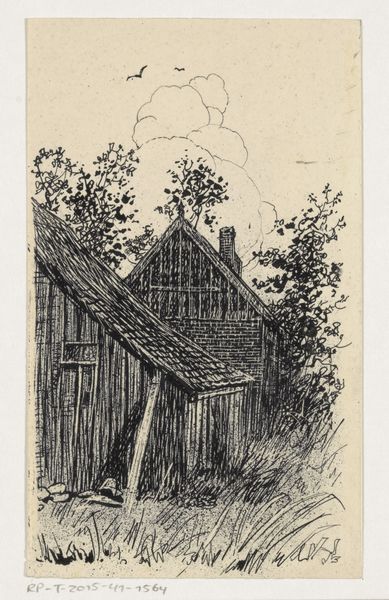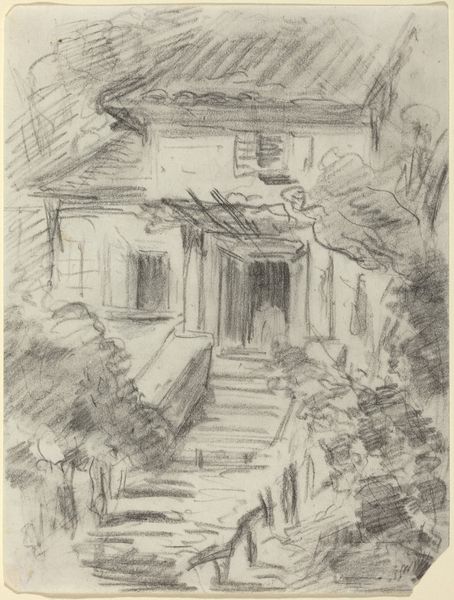
drawing, pencil
#
drawing
#
pen sketch
#
pencil sketch
#
landscape
#
pencil
#
cityscape
#
realism
Dimensions: height 87 mm, width 70 mm
Copyright: Rijks Museum: Open Domain
Curator: What a haunting little glimpse! Jan van Essen’s drawing, "Buitenhuis tussen bomen," which roughly translates to "Country House Between Trees," beckons from… well, sometime between 1864 and 1936. Editor: It does feel spectral. The bare trees clawing at the sky, that pale house…it's like a memory surfacing. The texture gives a raw intimacy to the drawing. Curator: Indeed. Van Essen’s work, often focusing on cityscapes, really captures the feeling of that time. Drawn in pencil and pen, it’s that liminal space, I think, between wildness and cultivation—a house stubbornly holding onto order while nature threatens to swallow it whole. Editor: I think you have a point! But it almost has a quiet rebellion embedded within it, almost whispering stories about what life must've been like back then. It is really up to the eye of the beholder! Curator: In its subdued tones, I can imagine it challenging the period’s obsession with idealized rural scenes. But also thinking about the cultural context. This almost sketch-like quality makes you think: Was it just that a captured fleeting moment or just someone experimenting with shapes and ideas? Editor: Possibly! I guess there's beauty even in incomplete attempts or unfinished things. If you go beyond a first impression, you almost get the gist of the era as he lived it. And there are parts of that drawing that suggest comfort in repetition but I don't think it should be read necessarily with nostalgic reverence. Curator: Absolutely, it transcends nostalgia! By inviting people to experience it using the cultural lens from which Van Essen created "Buitenhuis tussen bomen" from his personal experiences as a reference! The fact that we get to glimpse through this intimate picture in time. Editor: Exactly! Let’s leave our listeners to ponder that image of balance, and impermanence, then. Thank you!
Comments
No comments
Be the first to comment and join the conversation on the ultimate creative platform.
